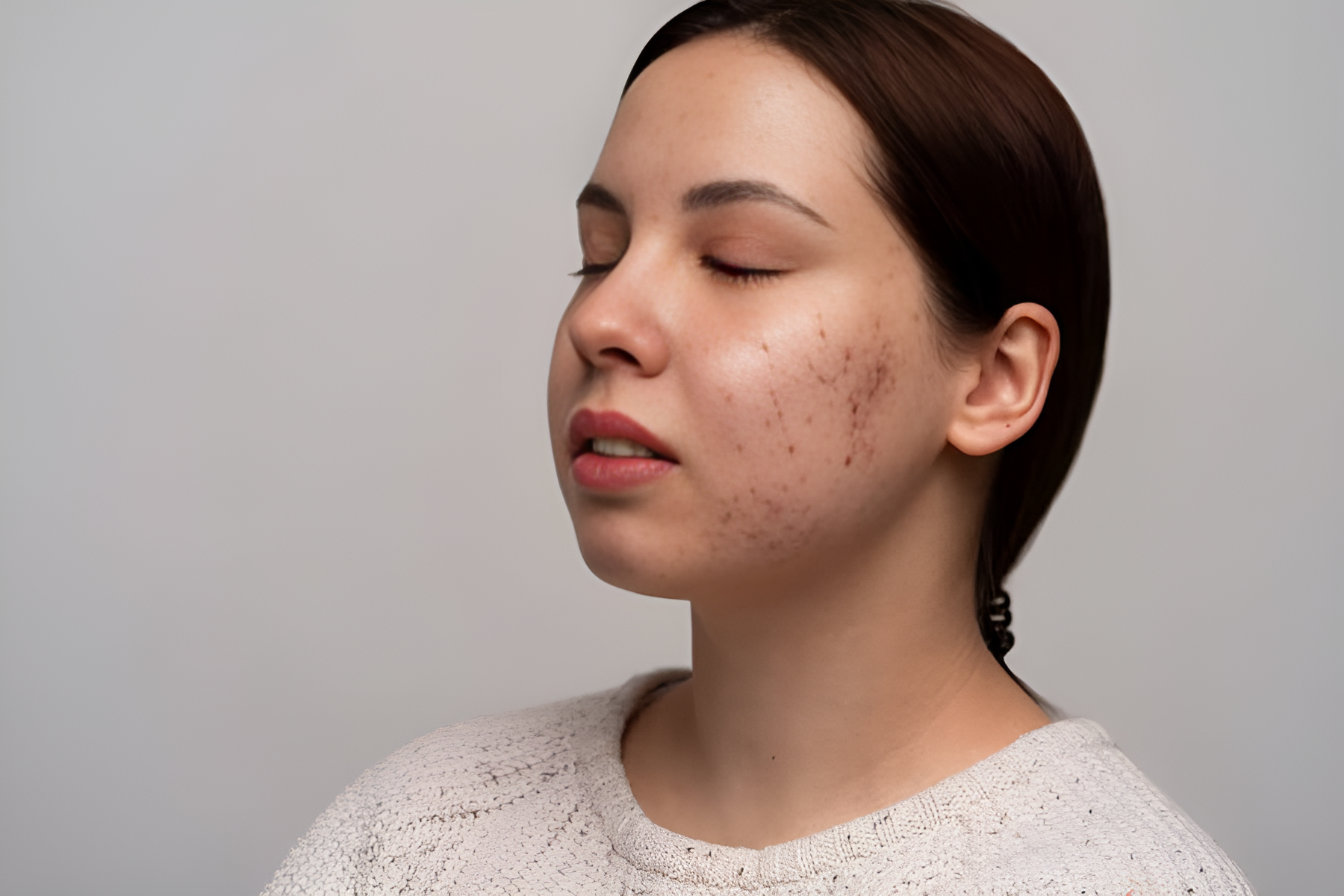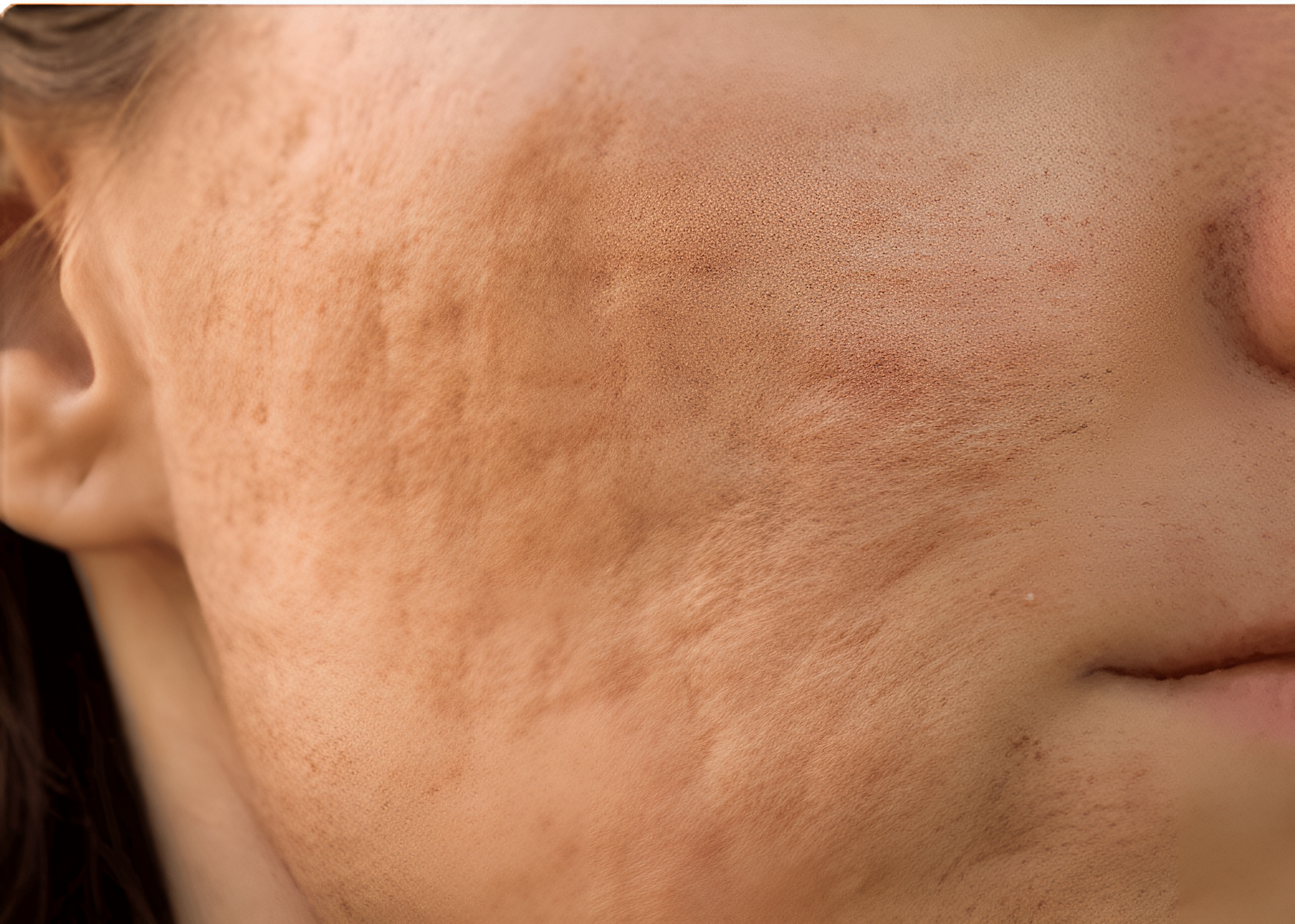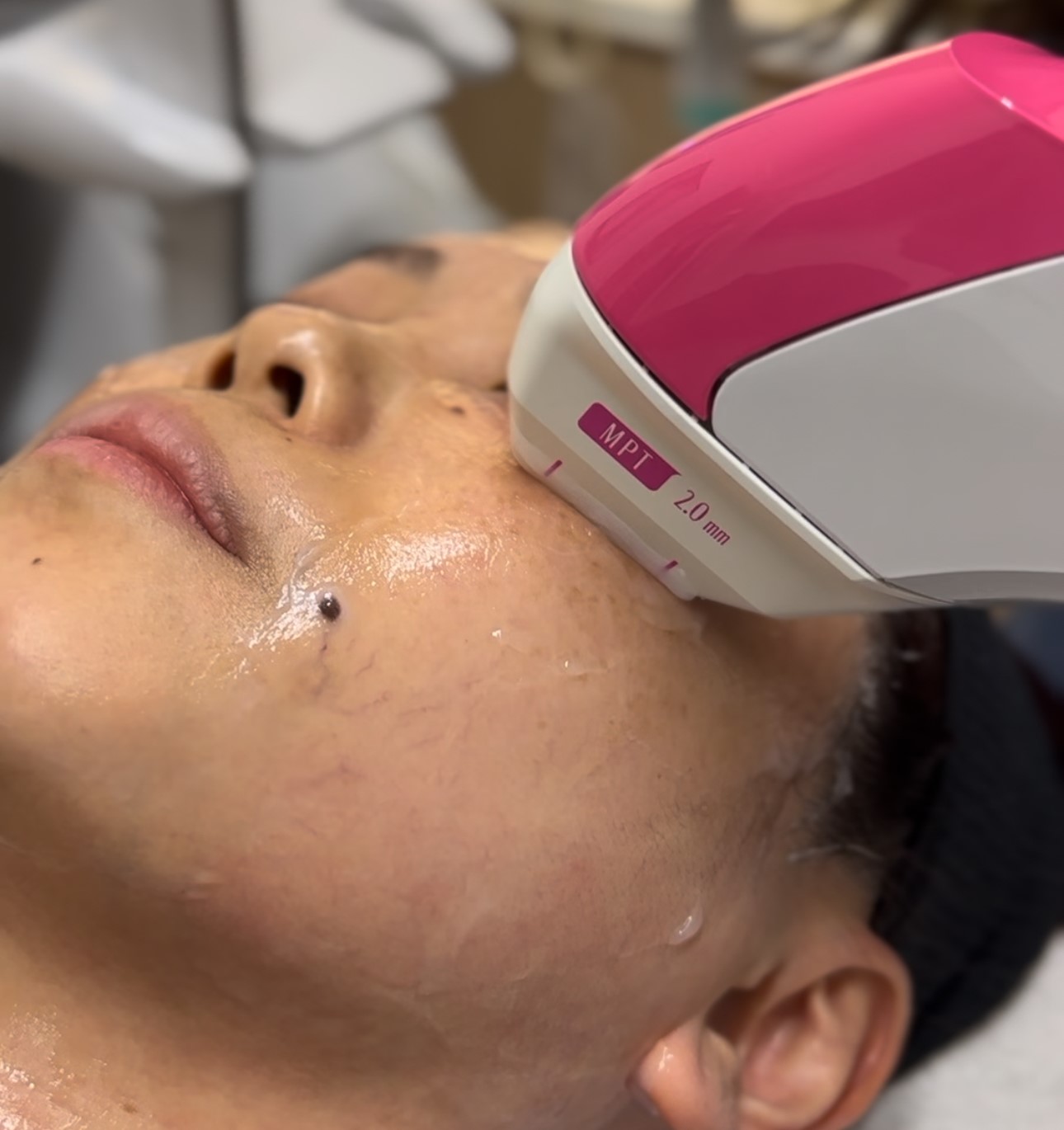Acne scars are a common concern that can significantly impact one’s self-esteem, leaving many in search of solutions for clearer, smoother skin. These scars are more than just a physical reminder of past acne bouts; they can affect how people perceive themselves and how they are perceived by others.
There are several types of acne scars: atrophic scars (ice pick, boxcar, and rolling scars), and hypertrophic and keloid scars.
Many people dealing with acne scars seek clearer, smoother skin, motivated by a desire for improved appearance and boosted confidence. Since each type of acne scar—whether atrophic, hypertrophic, or keloid—requires specific approaches, understanding the nature of these scars is crucial for effective treatment.
What are Acne Scars?
Acne scars are textural changes on the skin and indentations that develop as a result of severe acne. These scars occur when the skin’s inflammatory response to acne lesions, such as pimples, damages the underlying tissue and disrupts the healing process. When a pimple heals, the skin often undergoes a complex reparative process.
Initially, the inflammation caused by the acne lesion signals the body’s immune system to start the healing process. This involves the generation of new collagen fibres that attempt to repair the skin. If the original inflammation is too intense or lasts for an extended period, it can disrupt this process, leading to the formation of scars.
During this inflammatory response, the body produces collagen to repair the damaged skin. However, if the body produces too little or too much collagen, it can result in atrophic scars (depressions in the skin) or hypertrophic scars (raised areas on the skin), respectively.
How common is acne scarring? More than 90% of people experiencing acne develop acne scarring.
Types of Acne Scars
Understanding the different types of acne scars can help in finding the most effective treatment.
Rolling scars
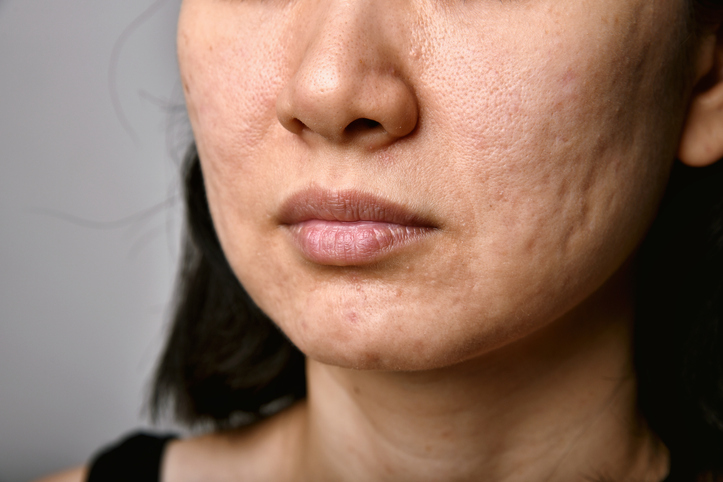
Rolling scars appear as shallow, wavy indentations on the skin. They are typically caused by damage under the skin’s surface, leading to an uneven appearance.
Ice pick scars
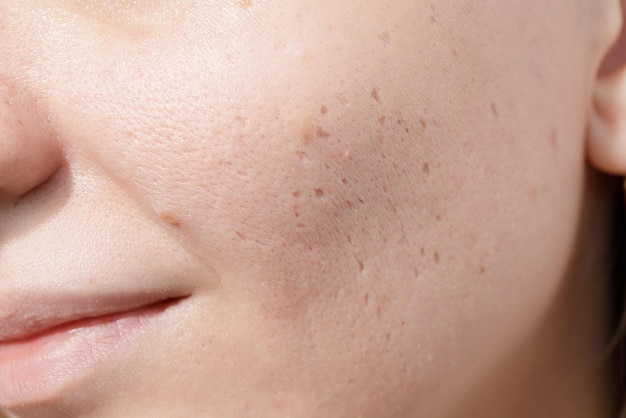
Ice pick scars are narrow, deep pits that resemble tiny, sharp indentations. These are deeper scars, making them more challenging to treat.
Boxcar Scars
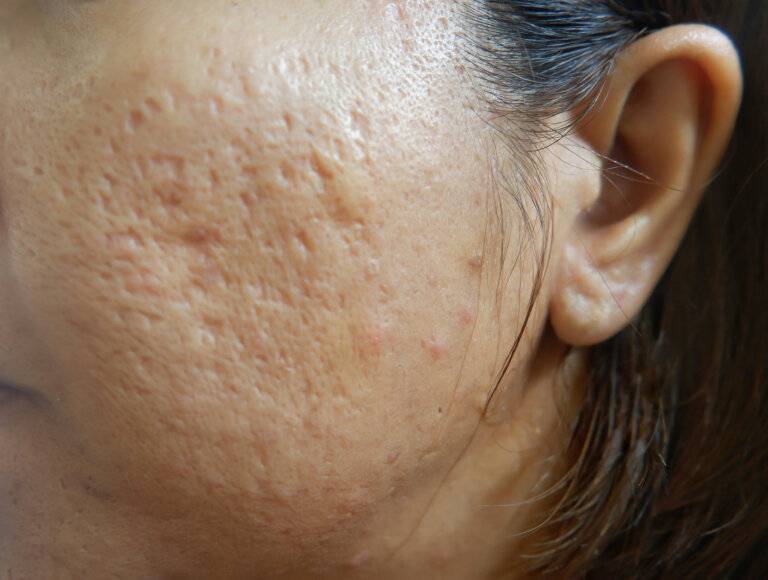
Boxcar scars are characterised by square or rectangular depressions with sharp edges. These scars often result from severe acne and give the skin a pitted look.
Atrophic Scars
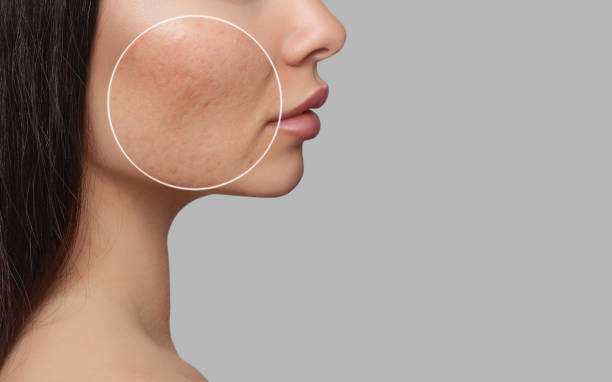
Atrophic scars are skin depressions that result from a lack of collagen during wound healing. These are commonly known as pitted acne scars.
Hypertrophic and Keloid Scars
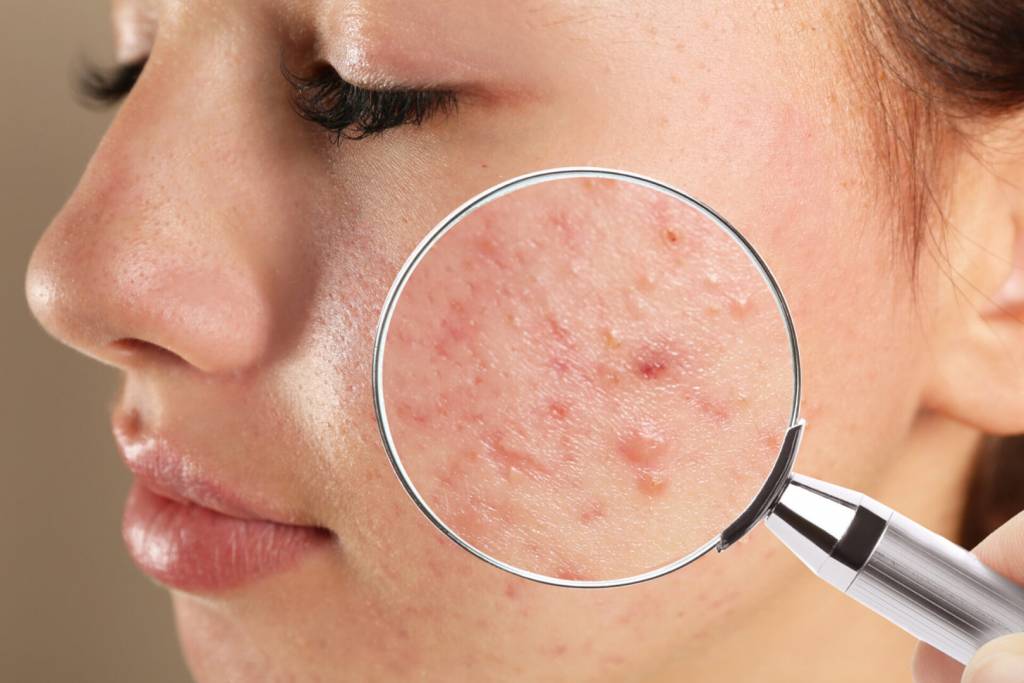
Hypertrophic and keloid scars manifest as raised, red scar tissue, but they differ in their appearance and growth patterns. Hypertrophic scars remain within the boundaries of the original wound, while keloid scars extend beyond the area of injury. These raised scars are a result of an excessive production of collagen during the healing process. When the body produces too much collagen, it can lead to the formation of either hypertrophic or keloid scars, depending on the individual’s skin type and healing response.
Causes of Acne Scars
Acne scars primarily result from severe acne and the habit of picking at pimples.
When acne is particularly intense, it often penetrates deep into the skin, causing damage that the body attempts to repair. However, this repair process can be imperfect, leading to the formation of scars. Picking or squeezing pimples exacerbates this issue by further damaging the skin and increasing the risk of infection and inflammation.
Inflammation also causes the formation of acne scars. When the skin tissue becomes inflamed, the body deploys its defence mechanisms, including white blood cells and other substances aimed at healing the affected area. However, this process can sometimes go overboard, resulting in the destruction of surrounding skin tissues and leading to scars.
Acne scarring may also be due to genetics and skin type. Some individuals are more predisposed to scarring due to their genetic makeup. Additionally, certain skin types, particularly those that easily discolour or have a tendency for hyperpigmentation, are more susceptible to scarring.
Prevention Tips for Acne Scars
Acne scars can be frustrating, but strategies are available to reduce their occurrence and severity. Here are some practical prevention tips:
1. Proper Acne Management Routine:
Maintaining a consistent skincare routine is crucial. Use a gentle cleanser to remove excess oil and dirt from the skin without stripping it, and hydrate it with an oil-free moisturiser, as dry skin can aggravate acne.
2. Use Non-Comedogenic Products:
Choose skincare and cosmetic products that are labelled ‘non-comedogenic’. These formulated products do not clog pores, reducing the potential for acne breakouts and subsequent scarring.
3. Avoid Picking at Pimples:
As tempting as it might be, picking at pimples can lead to increased inflammation and scar formation. Apply a spot treatment instead, and let the pimple heal naturally.
4. Lifestyle Adjustments:

Make sure to eat a balanced diet, get adequate sleep, and stay hydrated. Exercise also reduces stress, which is a known trigger for acne.
5. Seek Professional Help for Persistent Acne:
If acne persists despite home care, consider consulting a doctor. They can provide treatments such as topical or oral medications, as well as other therapies to control acne and prevent scarring.
How can I reduce my risk of acne scars? To reduce the risk of acne scars, follow a good skincare routine diligently, avoid picking or squeezing pimples, and use non-comedogenic products to prevent clogs in your pores. Also, observe a balanced diet, proper hydration, and stress management.
The Importance of Consistency
Consistency in your skincare routine ensures that your skin remains balanced, free of excess oil, and less prone to breakouts. By consistently using products that are suited to your skin type, you allow your skin to benefit fully from their active ingredients, leading to better overall skin health.
This disciplined approach helps reduce the chances of severe acne that could lead to scarring, making it an essential aspect of any effective skincare strategy.
Treatment Options for Acne Scars
Treatment options span from in-office procedures and surgical interventions. It’s essential to understand the different approaches to find the best one suitable for your specific needs. Consulting a doctor is crucial as they can provide a personalised treatment plan.
In-office Procedures
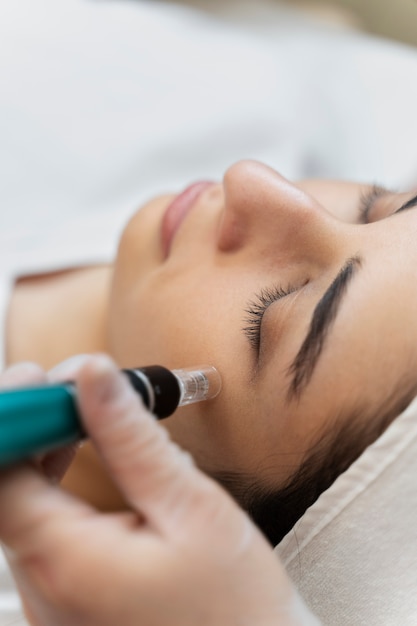
TCA Cross Chemical Peels:
The TCA Cross technique is commonly used specifically for treating ice pick scars.
This procedure typically takes 5 to 10 minutes, depending on the number of scars being treated. Repeated sessions may be required for optimal results. This procedure usually involves downtime of up to a week. The full results from a single procedure may take up to 3-6 months to show as the skin continues to heal and remodel collagen in the treated areas.
Intracel RF Microneedling:
Intracel RF Microneedling involves using tiny needles in a device to create micro-injuries in the skin. The tips of these microneedles produce radiofrequency which further helps to stimulate collagen growth. This process stimulates the body’s natural healing response to encourage new collagen and elastin production, which can improve skin texture and reduce scarring.
This procedure typically takes about 20- 30 minutes, and patients may experience mild redness of the skin for 2 to 3 days after the treatment. Results can be seen after 1 to 3 months, as the body will take time to stimulate collagen production and smoothen the skin.
Fractional CO2 Laser:
Fractional CO2 laser is a popular procedure for treating and resurfacing acne scars. This method uses an ablative laser in a grid-like pattern on the skin, where the skin between the treated areas serves as a reservoir that contains healthy tissue to promote healing.
The laser beams reach the correct layers of skin, causing a reaction to resurface, remodel and regenerate collagen that repairs acne scars. A topical numbing cream is usually applied to make the procedure more comfortable for you.
This treatment takes approximately 10 to 15 minutes, and patients might feel slight tingling and mild redness after. In 2-3 days, micro- scabs will form and this typically takes 7-9 days to fully heal. It is recommended not to pick on the scabs and allow them to drop off naturally. The Fractional Co2 laser can be done 5 to 10 more times for better results, with treatments spaced about a month apart.
Subcision:
Subcision disrupts the acne scar tissue under the skin and separates it by using a needle. A needle is placed into each individual scar and is used to subcise stubborn scars to smoothen it further. There might be some bleeding during the treatment. Temporary bruising and needle marks can be expected after the treatment. This procedure comes with a downtime of 5-7 days. Repeated sessions may be required for better results.
PDRN S Injections:
PDRN S is an injection containing polynucleotides to treat acne scars. It is injected into the base of the scar to repair skin, promote healing, and stimulate cells to produce collagen.
This procedure can be done together with subcission.
There may be small bumps in the treated area after the procedure. The bumps will usually resolve in 1-3 days. Your skin will typically recover from needle marks within 5-7 days.
Scar Excision:
For more severe acne scars, surgical options such as scar excision might be recommended. This procedure involves removing the scar tissue entirely and then closing the area with stitches, resulting in a smaller, less visible scar.
Fillers:
Dermal fillers work by filling in the indented scars, helping to smooth out the surface of the skin. This does not fully remove the appearance of the scars but rather, it makes the scar appear less obvious or sunken. Fillers provide immediate results, although they are not a permanent solution and might require repeat treatments. Typically results last about 6-9 months before the procedure will have to be repeated again.
Importance of Consulting a Dermatologist
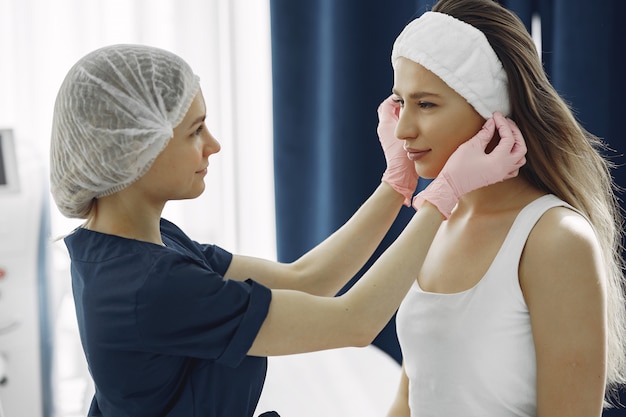
Successfully treating acne scars often requires a combination of different approaches. A doctor will evaluate the type of scars you have and recommend the ideal treatment for your acne scars.
With the right guidance and treatment, significant improvements in the appearance of acne scars are entirely possible.
When to See a Doctor?
There are certain situations where consulting a doctor becomes essential. If your scars are causing significant emotional distress or if your scars are deep or widespread, it’s important to seek professional help.
A doctor can assess the scars and recommend suitable treatment options, which may include microneedling, laser therapy, or surgical procedures.
Living with Acne Scars
Living with acne scars can have a profound psychological impact, influencing various facets of an individual’s life.
One of the most significant effects is a reduction in self-confidence. People with prominent acne scars might feel less attractive or worry excessively about their skin’s appearance, often diminishing their self-esteem. This decreased self-confidence can lead to social anxiety, as individuals might fear judgement or ridicule from others.
Social interactions, once a source of joy, could become stress-inducing events that are avoided whenever possible. Moreover, feeling self-conscious about one’s appearance can create a constant inner dialogue of self-criticism, affecting both personal and professional relationships.
Understanding this psychological burden is crucial in fostering a more empathetic and supportive environment for those coping with acne scars.
Acne scars can manifest in various forms, from atrophic scars like ice pick and boxcar scars to hypertrophic and keloid scars. You can prevent acne scars by treating acne early, avoiding picking or squeezing pimples, and using appropriate skincare products.
Numerous treatment options exist to reduce the appearance of acne scars. These include in-office procedures such as TCA cross chemical peels, Intracel RF Microneedling, and Fractional Co2 laser resurfacing, PDRN injections, as well as dermal fillers.
The possibility of achieving smoother skin is not only hopeful but also realistic with the right treatment approach and professional guidance. Advances in dermatological treatments mean that even severe acne scars can see significant improvement. With patience and perseverance, clearer and more radiant skin is within reach.


